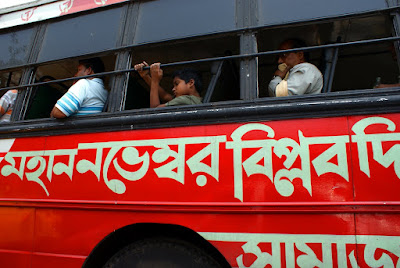Slow shutter speed can really make stunning effects on a photo. For example in the following shot, the slow shutter speed makes the lighted parts of the picture very fluid. Of course I used a tripod, to avoid camera shake.

Camera: Sony DSLR-A300 Exposure: 0.167 sec (1/6) Aperture: f/4.5Focal Length: 75 mm ISO Speed: 800
The next photo also, on the similar lines, taken with my Olympus SP510UZ, with a very long exposure of 15 seconds. I had to choose 1/6 second in the previous one as there was some motion in the car which I did not want to get blurred, but in this one, since everything is very static, I had the luxury of a very long exposure.
 |
| From Blog |
ISO: 100 Exposure: 15.0 sec Aperture: 8.0 Focal Length: 10.9mm
The third example is a waterfall. Shooting a water fall with a slow shutter speed, will blur the movement of the water, creating a nice visual effect.

Exposure: 0.167 sec (1/6) Aperture: f/8 Focal Length: 17.5 mm ISO Speed: 200
The fourth shot is the same waterfall. I handheld both shots as I was not carrying a tripod.
 |
| From Blog |
ISO: 200 Exposure: 1/6 sec Aperture: 8.0 Focal Length: 6.3mm
One equipment that would have made the fourth shot better, but unfortunately I do not possess, is a graduated neutral density filter. You can see that the sky has blown out highlights. A graduated neutral density filter will have a gradient from gery to white, thus evening out the exposure where there is a zone with intense light while another is muted light.
Do try out taking long exposure shots. Let me know how it goes.



















































